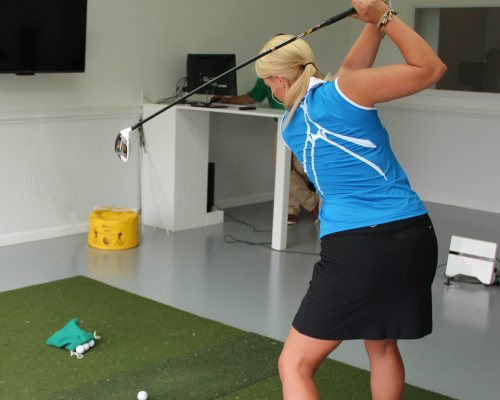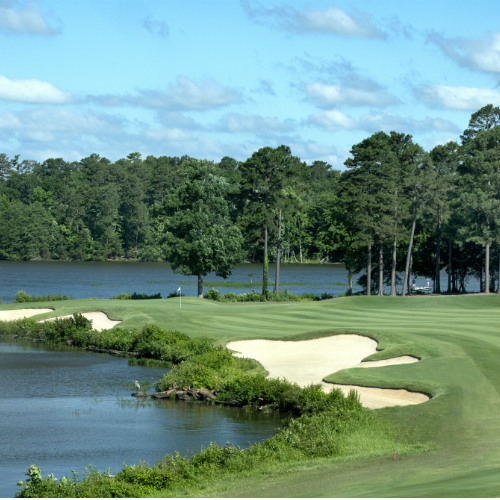
I'm sitting in sunny Scottsdale, Arizona on a third-story patio admiring the purple glow of the McDowell Mountains. Chatting with friends over pulsating music and a cadence of “whoosh … ping” on the perimeter, I order appetizers and a round of cocktails. Moments later buffalo chicken sliders, crab cakes, and a myriad of margaritas arrive for the group.
Turning my attention to the “whoosh … ping,” I watch our host settle into his stance and send a golf ball soaring toward a netted outfield. It lands on its target, and a microchip within the ball instantly pings distance and accuracy data to a nearby monitor. The group cheers and jeers as points are assigned and a new champion emerges on the leaderboard.
NEW FRONTIER
At this point, I’m half expecting a spaceship to cruise by on a routine connection between Sky Harbor airport and Mars. What strange planet is this? “It’s fun,” a friend tells me as she chooses from a color-coded rack of clubs, “but it’s not really golf.”
First arriving from the UK in 2005, TopGolf describes this scene as “golf entertainment,” and it has quickly become a popular urban hangout. (One can draw parallels to the evolution of the arcade hall that Dave & Busters spearheaded in the ’90s.) Though certainly not for everyone, it caters to the shorter attention spans of this modern “Age of Instant” and offers a new opportunity for entry into an otherwise less approachable sport.
Whether mixing elements of the game into an altogether new experience, or amplifying teaching tools with video and Doppler radar, there’s no question that technology has crossed paths with our beloved, age-old sport.
MODERN ENHANCEMENT
Let’s travel now to a more utilitarian setting, the Golf Learning Center at TPC Wakefield Plantation in Raleigh, North Carolina, where Director of Golf Josh Points puts his tenured teaching methods to work. Lined up across from a television screen, a student swings purposefully while a nearby camera records the motion. They review the footage together, and Points uses slow-motion to provide precise instruction.
“Our Learning Center lets us focus on improving longstanding fundamentals in a technology-forward environment that creates the ultimate student experience,” says Points. “Visual learning is by far the most efficient way to improve any type of motor skill, and we see it in practice every day with our students’ growth.”
Also equipped with FlightScope® technology, Raleigh Country Club and The Reserve Golf Club of Pawleys Island, South Carolina are able not only to enhance lessons, but also help golfers determine their best set of clubs based on the club head speed and ball speed data it generates. Both Ross and Dye courses at Sedgefield Country Club and Holston Hills Country Club in Knoxville, Tennessee use the TrackMan system for swing analysis. On the mobile front, members and pros across all McConnell Golf clubs use the V1 app on their phones or tablets to improve their game.
A GAME FOR THE AGES
So, what will a golf club look like in the future? Will a set of monitors showing member’s daily scores illuminate the walls? Will a hole-in-one become a push notification on our mobile devices instead of an in-person celebration at the 19th hole? Maybe someday.
But I don’t see anything replacing mankind’s 500-year-old passion for the game itself. At the heart of golf lies a connection with nature’s simplistic beauty and the physical and mental contest between a player, the landscape, and himself. These classic elements need no improvement.
“McConnell Golf is always looking for technology that brings our members real value. From operational efficiencies to learning tools, we focus on advancements that embody the spirit of the game and enhance the service we are able to provide,” says McConnell Golf COO Christian Anastasiadis.
Read More


